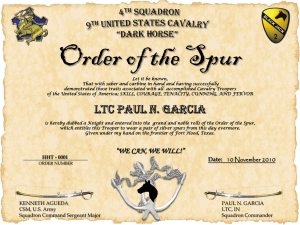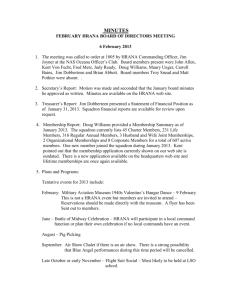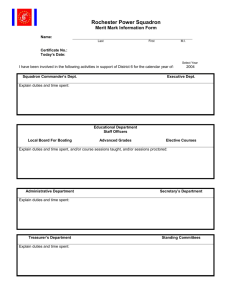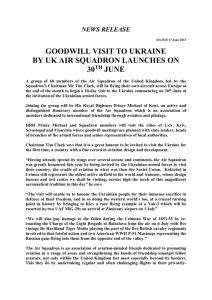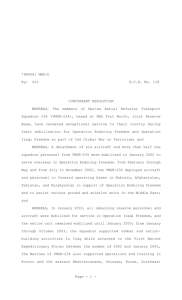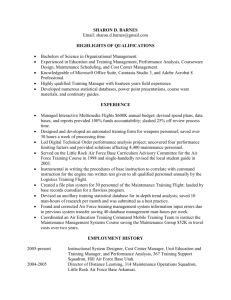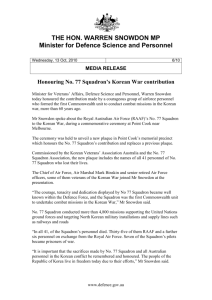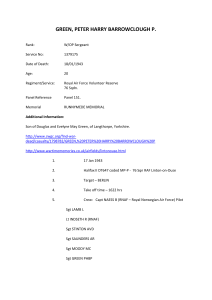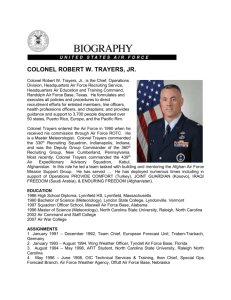SLD01_Intro_to_Leadership
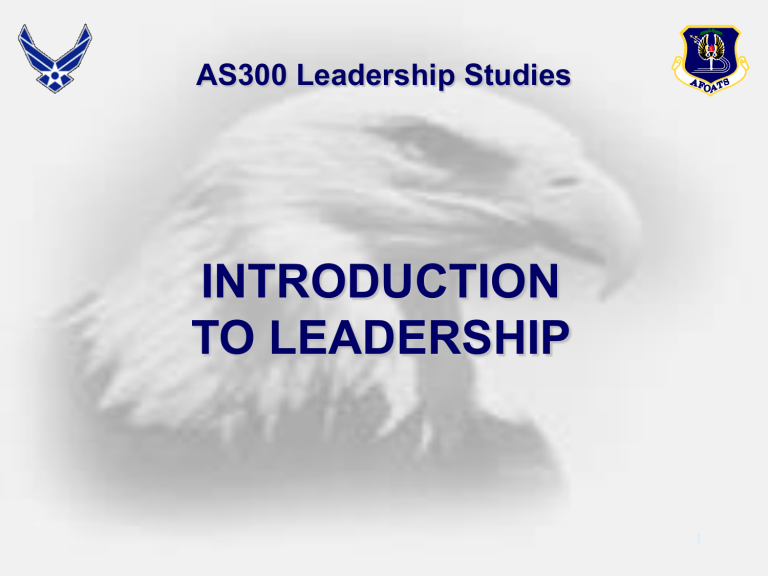
AS300 Leadership Studies
INTRODUCTION
TO LEADERSHIP
1
Overview
Leadership Basics
• Course Definition
• Leadership is both an art & science
Leadership vs Management
Model – Interactional Framework for
Analyzing Leadership
Course Overview
2
Leadership Basics
Definition
“Leadership is the art and science of influencing and directing people to accomplish the mission .”
Fundamental elements of leadership
• People
• Mission
Leadership as an ART
Leadership as a SCIENCE
3
Leadership as a Science
Myth #1: Leaders are born, not made.
Truth: Innate factors interact with experience
Myth #2: Good leadership is all common sense.
Truth: What seems obvious after you know the results and what you would’ve predicted are not the same thing.
Hindsight is always 20/20.
Myth #3: The only school you learn leadership from is the School of Hard Knocks.
Truth: Formal study provides a variety of ways of examining a leadership situation. Examining leadership from multiple perspectives is a skill in becoming a better leader
.
4
Leadership vs Management
LEADERSHIP
Risk taking
Dynamic
Creative
Change
Visionary
Value laden
MANAGEMENT
Efficiency
Planning
Paperwork
Procedures
Regulations
Consistency
Two overlapping functions…although some functions performed by leaders and managers may be unique, there is an area of overlap…organizations need both to be successful.
(Hughes, Curphy, & Ginnett, 2002)
5
Interactional Framework for
Analyzing Leadership
Leader
Followers Situation
Leadership is a process, not a person or position
Leadership…a complex interaction; not easy to make broad generalizations about leadership
Useful heuristic to analyze situations
Use heuristic to organize leadership theories and research
6
Course Overview
Leadership Overview
Leadership basics, AF Leadership, the Profession of Arms
Basic Skills in Leadership
Self assessment, effective communication skills, critical thinking, problem solving, management skills, follower role, team building, motivation, managing conflict, choosing best behaviors for given situations)
Military Relationships
Civilians, professional/unprofessional, case study
Advanced Skills in Leadership
Power & influence, effective supervision, counseling, authority, responsibility, accountability
Ethics in Leadership
Applying core values, ethics, law, joint ethics, supervision, putting it all together (capstone case study)
7
Summary
Leadership Basics
• Course Definition
• Leadership is both an art & science
Leadership vs Management
Model – Interactional Framework for
Analyzing Leadership
Course Overview
8
“Freedom to do your best means nothing unless you’re willing to do your best.”
Colin Powell
9
Case Study
Col Pete Novak commanded an Air Force squadron that airlifted supplies to combat units during the Korean
War. The squadron had more than 200 men and several cargo planes. When Novak assumed command, the situation was bleak. The squadron was short of supplies, personnel, and replacements. Organization and coordination were poor, and little cooperation and teamwork existed among sections. Morale was low because of a grinding workload, constant bickering, and the stress of flying into combat zones.
Novak met with the squadron. He introduced himself and emphasized how important the group’s mission was to the success of the war. He talked about how men on the front lines depended on the squadron to bring them supplies and ammunition. He reminded them that every Airman had a vital function in the operation of the squadron.
Then Novak set out to learn more about the personnel in his unit, beginning with the officers. He held frequent staff meetings with the section heads and NCOs to discuss the methods used to carry out the squadron’s mission. He visited the enlisted men at work and off duty, talking with them and showing a personal interest in them. He listened to their complaints and did his best to respond to their concerns. He flew along with the crews on some of the supply missions. On one occasion, when the front lines desperately needed supplies yet the squadron was shorthanded, he pitched in and worked beside the Airmen all during the night to load the planes.
Before long, Novak had learned each person’s name, what his job was, and something about his background.
As he found out more about his subordinates’ abilities, he reorganized the squadron to place people where their skills and experience would-be of most use. In staff meetings, Novak and his personnel worked out disagreements, and he assigned responsibilities when all concerned were present. He clearly delegated authority to reduce confusion and duplication of orders. He held NCOs accountable for the actions of their personnel and, within limits, enforced their decisions without question.
Within two months, improvements were evident. The officers and enlisted men learned what was expected of them and began to see themselves as essential parts of the organization. They began to take pride in their squadron was one of the most efficient in Korea.
